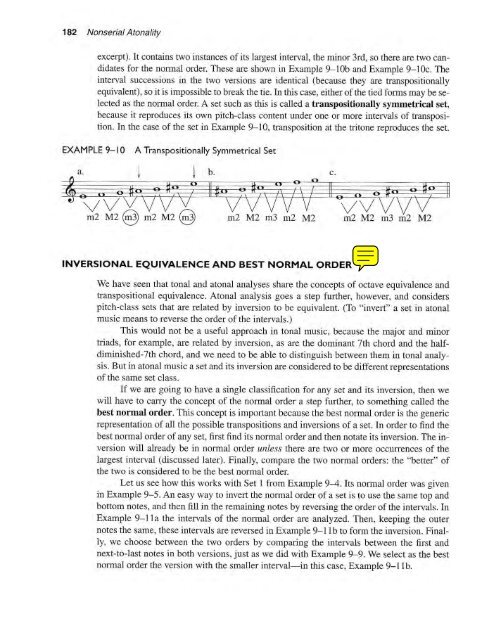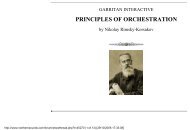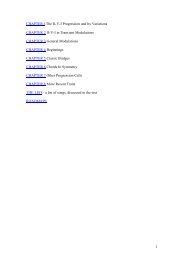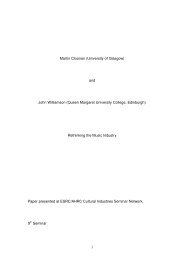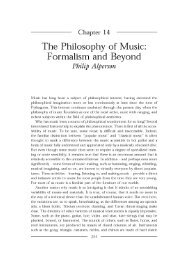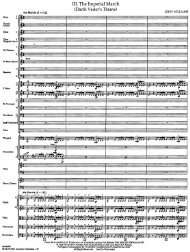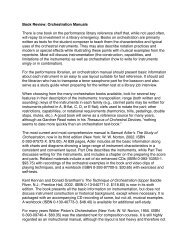TWENTIETH- - Synapse Music
TWENTIETH- - Synapse Music
TWENTIETH- - Synapse Music
You also want an ePaper? Increase the reach of your titles
YUMPU automatically turns print PDFs into web optimized ePapers that Google loves.
182 Nonserial Atonality<br />
excerpt). It contains two instances of its largest interval, the minor 3rd, so there are two candidates<br />
for the normal order. These are shown in Example 9- 1 Ob and Example 9-1 Oc. The<br />
interval successions in the two versions are identical (because they are transpositionally<br />
equivalent), so it is impossible to break the tie. In this case, either of the tied forms may be selected<br />
as the nonnal order. A set such as this is called a tra nspositionally symmetrical set,<br />
because it reproduces its own pitch-class content under one or more intervals of transposition.<br />
In the case of the set in Example 9- 10, U"lUlsposition at the tritone reproduces the set.<br />
EXAMPLE 9-10 A Transposition.lly Symmetrical Set<br />
INVERSIONAL EQUIVALENCE AND BEST NORMAL ORDER<br />
We have seen that tonal and atonal analyses share the concepts of octave equi valence and<br />
transpositional equivalence. Atonal analysis goes a step further, however, and considers<br />
pitch-class sets that are related by inversion to be equivalent. (To " invert" a set in atonal<br />
music means to reverse the order of the intervals.)<br />
This would not be a usefu l approach in tonal music, because the major and minor<br />
triads, for example, are related by inversion, as are the dominant 7th chord and the halfdiminished-7th<br />
chord, and we need to be able to distinguish between them in tonal analysis.<br />
But in atonal music a set and its inversion are considered to be different representations<br />
ofthe same set class.<br />
If we are goi ng to have a single classification for any set and its inversion, then we<br />
will have to carry the concept of the normal order a step r urther. to something caJled the<br />
best normal order. This concept is imponant because the best nonnal order is the generic<br />
representation of all the possible transpositions and inversions of a set. In order to find the<br />
best normal order of any set, first find its normal order and then notate its inversion. The inversion<br />
will already be in normal order unless there are two or more occurrences of the<br />
largest interval (discussed later). Finally, compare the two normal orders: the "better" of<br />
the two is considered to be the best normal order.<br />
Let us see how this works with Set I from Example 9-4. Its nomlal order was given<br />
in Example 9-5. An easy way (Q invert the no rmal order of a set is to use the same top and<br />
bottom notes, and then fill in the remaining notes by reversing the order of the intervals. In<br />
Example 9- 11 a the intervals of the nonnal order are analyzed. Then, keeping the outer<br />
notes the same, these intervals are reversed in Example 9- llb to form the inversion. Finally,<br />
we choose between the two orders by comparing the intervals between the first and<br />
next-ta-Iast notes in both versions, just as we did with Example 9- 9. We select as the best<br />
normal order the version with the smaller interval- in this case, Example 9-1 lb.


